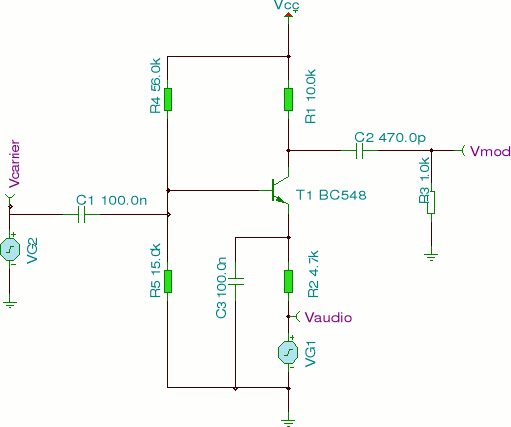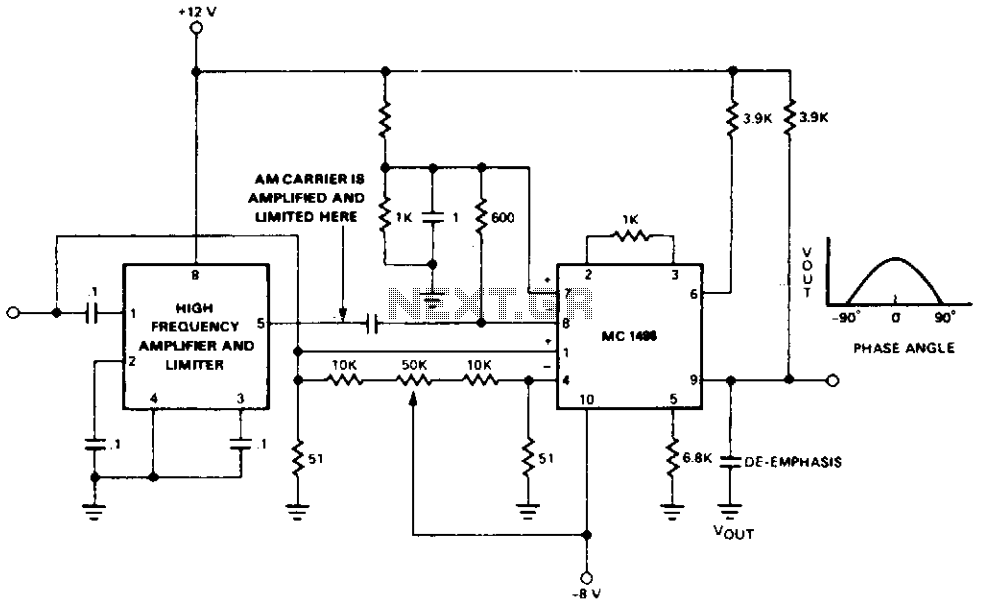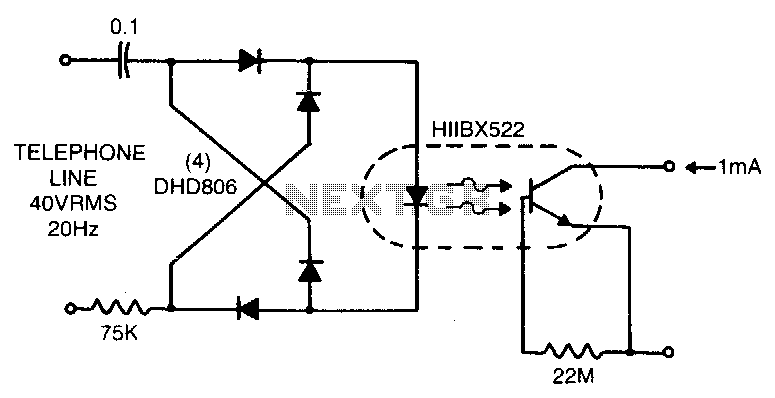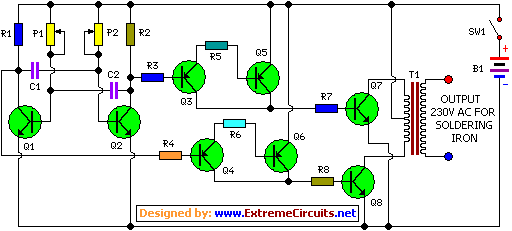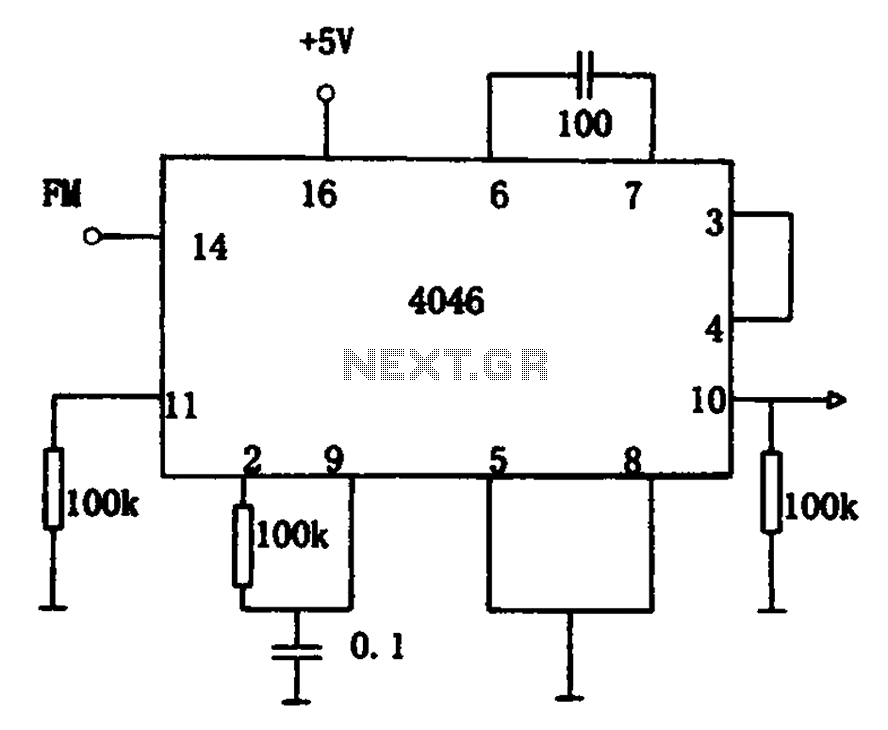
True Bypass Passive Ring Modulator

A simple two-transformer, four-germanium-diode ring modulator featuring a true bypass switching scheme. It includes an input for carrier wave modulation. Power is only required for the status LED.
The described circuit is a two-transformer, four-germanium-diode ring modulator, which is a type of analog signal processing device used to create amplitude modulation. The circuit typically operates by mixing two input signals: a carrier wave and a modulating signal. The modulation occurs through the use of diodes arranged in a ring configuration, which allows for the generation of sidebands that contain the information from the modulating signal.
In this design, two transformers are utilized to couple the input signals to the diode ring. Each transformer serves to isolate the input signals and ensure proper impedance matching, which is crucial for maintaining signal integrity. The four germanium diodes are arranged in a ring topology, which enables the modulation of the carrier wave by the input signal effectively. Germanium diodes are favored in such applications due to their low forward voltage drop and fast switching capabilities, which contribute to better performance in high-frequency applications.
The true bypass switching scheme integrated into the modulator allows for the signal to be routed around the modulator circuit when it is not in use. This feature is essential for preserving the original signal quality and avoiding any unwanted coloration when the modulator is bypassed. The switching mechanism can be implemented using a mechanical switch or a relay, depending on the design requirements.
Power supply requirements for this circuit are minimal, as power is only needed for the status LED, which indicates the operational state of the modulator. This design consideration enhances its usability in various applications, particularly in live sound environments or studio settings where power conservation is often a priority.
Overall, this two-transformer, four-germanium-diode ring modulator is a versatile tool for audio processing, capable of producing complex modulation effects while maintaining a straightforward design and ease of use.A simple 2 Transformer, 4 Germanium Diode Ring Modulator with a true bypass switching scheme. Includes input for Carrier Wave modulation. Power is only required for the status LED. 🔗 External reference
The described circuit is a two-transformer, four-germanium-diode ring modulator, which is a type of analog signal processing device used to create amplitude modulation. The circuit typically operates by mixing two input signals: a carrier wave and a modulating signal. The modulation occurs through the use of diodes arranged in a ring configuration, which allows for the generation of sidebands that contain the information from the modulating signal.
In this design, two transformers are utilized to couple the input signals to the diode ring. Each transformer serves to isolate the input signals and ensure proper impedance matching, which is crucial for maintaining signal integrity. The four germanium diodes are arranged in a ring topology, which enables the modulation of the carrier wave by the input signal effectively. Germanium diodes are favored in such applications due to their low forward voltage drop and fast switching capabilities, which contribute to better performance in high-frequency applications.
The true bypass switching scheme integrated into the modulator allows for the signal to be routed around the modulator circuit when it is not in use. This feature is essential for preserving the original signal quality and avoiding any unwanted coloration when the modulator is bypassed. The switching mechanism can be implemented using a mechanical switch or a relay, depending on the design requirements.
Power supply requirements for this circuit are minimal, as power is only needed for the status LED, which indicates the operational state of the modulator. This design consideration enhances its usability in various applications, particularly in live sound environments or studio settings where power conservation is often a priority.
Overall, this two-transformer, four-germanium-diode ring modulator is a versatile tool for audio processing, capable of producing complex modulation effects while maintaining a straightforward design and ease of use.A simple 2 Transformer, 4 Germanium Diode Ring Modulator with a true bypass switching scheme. Includes input for Carrier Wave modulation. Power is only required for the status LED. 🔗 External reference
Warning: include(partials/cookie-banner.php): Failed to open stream: Permission denied in /var/www/html/nextgr/view-circuit.php on line 713
Warning: include(): Failed opening 'partials/cookie-banner.php' for inclusion (include_path='.:/usr/share/php') in /var/www/html/nextgr/view-circuit.php on line 713
